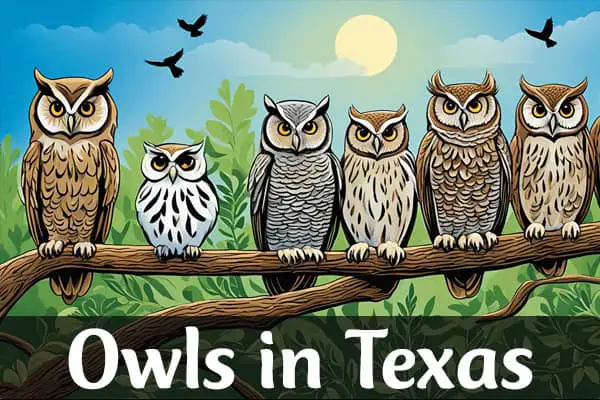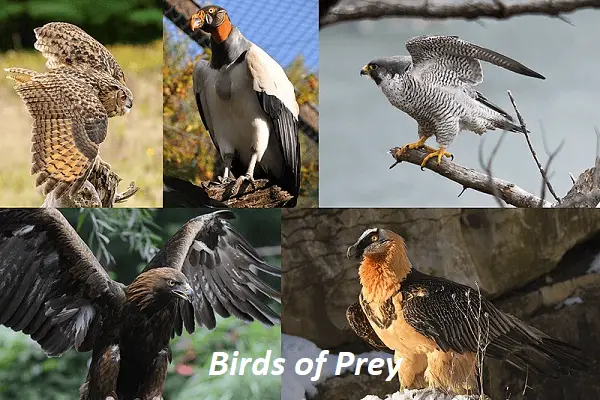Owls in Texas (8 Species With Pictures)
Did you know Owls in Texas are home to 13 native owl species? From the big Great Horned Owl to the tiny Elf Owl, it’s a paradise for owls. But where can you see these birds? Let’s discover the best places to spot owls in Texas.
Texas is famous for its birdwatching, with over 670 bird species. Among them, 17 owl species have been seen, but 13 are common in the state. This guide will take you to the best spots to see these amazing birds.
1. Short-eared Owl
- Scientific name – Asio flammeus
- Lifespan – 4 years (average)
- Size – 13.4 to 16.9 in
- Weight – 7.3 to 16.8 oz
- Wingspan – 33.5 to 40.5 in
- Status – Least concern
The short-eared owl is a rare winter visitor to Texas, adding wonder to the state’s bird life. These owls have short ear tufts and prefer open areas like meadows and marshes. You can find them in places like the Anahuac National Wildlife Refuge and Attwater Prairie Chicken National Wildlife Refuge.

They stand out with their white and buff feathers and dark spots. Their faces are whitish with dark patches around bright yellow eyes. This makes them a true marvel of nature.
If you want to see these owls, look for them in Texas’s open areas during winter. With patience and luck, you might see one flying over fields, hunting for small rodents.
The short-eared owl is not common in Texas but shows how diverse the state’s bird life is. So, when you’re in Texas’s open spaces, watch for this amazing bird. Enjoy the chance to see its beauty up close.
2. Great Horned Owl
- Scientific name – Bubo virginianus
- Lifespan – 13 years (average)
- Size – 18.1 to 24.8 in
- Weight – 32.1 to 88.2 oz
- Wingspan – 39.8 to 57.1 in
- Status – Least concern
The Great Horned Owl is the biggest owl in Texas and a top predator. These birds live all over the state, in places like woodlands, farms, and even cities.
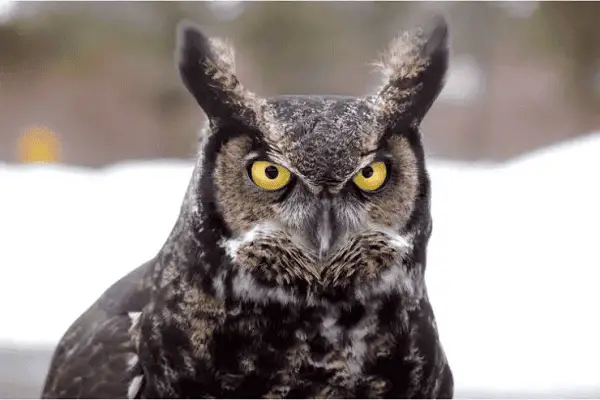
They stand out with their ear tufts, grey-brown feathers, and strong claws. They can spread their wings up to 5 feet wide and weigh up to 4.8 pounds. This makes them powerful hunters at night.
Hunting Prowess and Dietary Habits
The Great Horned Owl is a top hunter. They eat many things, like small mammals and birds. They can even take down prey bigger than themselves with their talons.
These owls hunt from high spots, like poles or cliffs. They use their great night vision and hearing to catch their prey. This makes them the top hunters at night in Texas.
“Great Horned Owls are considered the apex predators of the night, ruling the skies with their exceptional hunting abilities and powerful talons.”
Great Horned Owls are not a conservation concern. They can live in many places, from the countryside to cities. This lets them keep their numbers strong in Texas.
When you’re out in nature or even in the suburbs, look for the Great Horned Owl. They are the top predators of the Texas night.
3. Barred Owl
- Scientific name – Strix varia
- Lifespan – 8 years (average)
- Size – 16.9 to 19.7 in
- Weight – 16.6 to 37 oz
- Wingspan – 39 to 43.3 in
- Status – Least concern
The Barred Owl calls Texas’s forests home, living in the vast, mature woodlands of the east and south. They stand out with their dark eyes, yellow beaks, and no ear tufts. These owls are large and majestic.
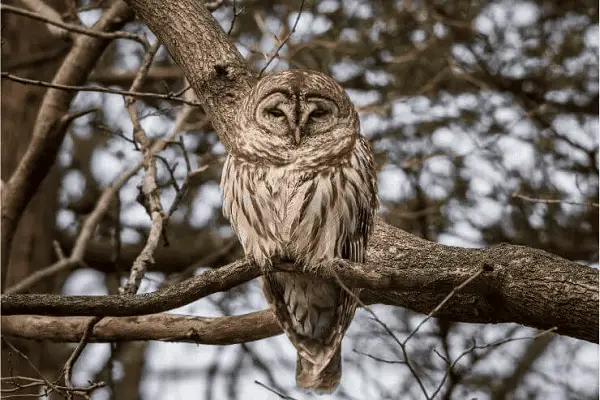
Their call is unique, sounding like “Who cooks for you? Who cooks for you all?” This call, along with their looks, makes them known as “the eloquent woodland dweller.”
Barred Owls are skilled hunters. They eat small mammals like rabbits and mice, and even birds. Their feathers help them blend in, making it easy to sneak up on prey.
In Texas, these owls live all year in the east and south. They love forests with streams and swamps. These places offer plenty of food and places to nest.
As top predators, Barred Owls keep the ecosystem balanced. Their calls are a key part of Texas’s natural sounds. They show how rich and diverse Texas’s bird life is.
owls in Texas: A Diverse Avian Spectacle
Texas is a haven for owls, with its varied landscapes supporting many owl species. From the eastern and southern lush areas to the western deserts, each owl has its own unique traits and habits. You’ll find the Great Horned Owl, the Barred Owl, the Eastern Screech-Owl, and the tiny Elf Owl, among others.
Owls Thriving in Texas’ Diverse Habitats
The state’s wide range of habitats, from piney woods to desert plains and coastal marshes, shelters many owl species. These nocturnal hunters are vital to the ecosystem, controlling populations of small mammals, birds, and insects.
There are 13 types of owls in Texas, each with its own special features and ways of adapting. Some, like the Great Horned Owl and Eastern Screech-Owl, are easy to spot. Others, like the Burrowing Owl and Short-eared Owl, are harder to find and prefer certain places.
- The Great Horned Owl, known for its powerful talons and impressive size, can be found in forests, swamps, deserts, and even urban areas.
- The Barred Owl, with its distinctive “who-cooks-for-you” call, is a woodland dweller found in the eastern and southern regions of Texas.
- The Eastern Screech-Owl, a common and adaptable species, is often spotted in suburban areas, nesting in tree cavities or on streetlamps.
- The Burrowing Owl, a unique species that makes its home underground, can be observed in open areas such as grasslands and prairies, particularly in the western and southern parts of the state.
The diversity of owl species in Texas shows the state’s incredible ecological variety. It offers birdwatchers and nature lovers a unique chance to see owls in their natural settings. Whether you’re in the eastern woods, southern marshes, or western deserts, you’ll likely see these night birds.
“Texas is a bird watcher’s paradise, with its incredible geographic diversity supporting a wide range of bird species, including a remarkable diversity of owl species.”
When exploring the owl habitats in Texas, keep an eye out for the unique shapes and sounds of these birds. From the famous Great Horned Owl to the rare Elf Owl, Texas’s owl collection is truly amazing.
4. Eastern Screech-Owl
- Scientific name – Megascops asio
- Lifespan – 4 years (average)
- Size – 6.3 to 9.8 in
- Weight – 4.3 to 8.6 oz
- Wingspan – 18.9 to 24 in
- Status – Least concern
If you live in eastern or southern Texas, you might see a common owl – the Eastern screech owl. These small owls live in suburbs, nesting in tree holes or on streetlamps. They have unique calls and look-alike to their surroundings, making them a joy to see.
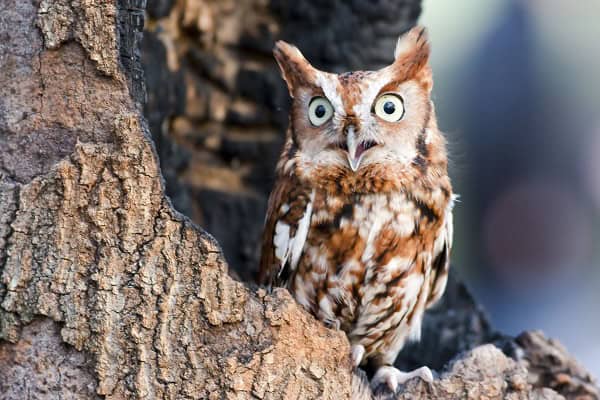
The Eastern Screech-Owl is small and sturdy with small ear tufts and a round head. They have two colors, grey and red, and their faces are pale with yellow eyes and dark beaks. Some in southern Texas even have a pale beak. They are mostly active at night but can be seen during the day too, especially when they’re with their babies.
Where to Find the Eastern Screech-Owl in Texas
These owls live in eastern and southern Texas. They like open woods, parks, and even backyards. Look for their nests in tree holes or in high places like streetlamps or birdhouses.
To see an Eastern Screech-Owl, listen for their unique calls. They sound like a series of “trills” or “whinnying” sounds at night, especially when they’re breeding.
“The Eastern Screech-Owl is a common and adaptable species found throughout the eastern and southern parts of Texas. These small owls can often be spotted in suburban areas, nesting in tree cavities or even on streetlamps.”
If you love birds or nature, the Eastern screech owl is a great find in Texas. Keep watching and listening, and you might see this cute owl in your yard.
5. Western Screech-Owl
- Scientific name – Megascops kennicottii
- Lifespan – 8 years (average)
- Size – 7.5 to 9.8 in
- Weight – 3.5 to 10.8 oz
- Wingspan – 21.6 to 24.4 in
- Status – Least concern
The Western Screech-Owl looks a lot like the Eastern Screech-Owl but lives in far west Texas. It’s not as common to see them because the area is very rural and remote. They like living in big trees like oaks, pecans, or cottonwoods, which grow near water. You can find them in places like Big Bend National Park, Davis Mountains State Park, and around El Paso.
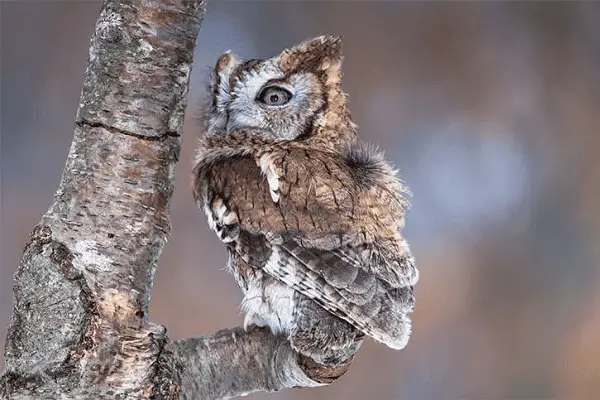
These owls live from Baja California and central Mexico up to California, west Texas, western Montana, western British Columbia, and southeast Alaska. They mostly eat small mammals and insects, like mice and shrews. They throw up bones and fur in the form of pellets two to four times a day.
When they’re breeding, they lay two to eight white eggs. In Grand Junction, Colorado, a survey found 102 owls in different spots over a month. At least 18 breeding pairs were found, and over 200 nest boxes were put up to help them.
| Metric | Value |
|---|---|
| Weight | Less than 1 ounce |
| Length | 5 inches |
| Wingspan | 6.5 feet |
| Prey | Insects, scorpions, spiders, scavenged food |
| Population Trend | Declining in Texas and California |
The elf owl is the smallest owl in the world, living in Texas and California. It weighs less than an ounce and is just five inches long. It eats insects, scorpions, and spiders, and also looks for food in the desert. Sadly, there are fewer elf owls now in these places.
“The Blakiston’s fish owl is the world’s largest owl, found in remote areas of Japan, Siberia, Manchuria, and Korea. Female Blakiston’s fish owls are larger than males and can weigh up to 10 pounds with a 6.5-foot wingspan.”
The Blakiston’s fish owl was named after English naturalist Thomas Blakiston, who first found it in Hokkaido, Japan. The Ainu people, who live on Hokkaido, think of it as the “god of the village.”
6. Barn Owl
- Scientific name – Tyto alba
- Lifespan – 4 years (average)
- Size – 12.6 to 15.8 in
- Weight – 14.1 to 24.7 oz
- Wingspan – 39.4 to 49.2 in
- Status – Least concern
The Barn Owl glides silently through the night in Texas. It has a heart-shaped face and makes eerie calls. You can find it in places like farms, forests, and even cities.
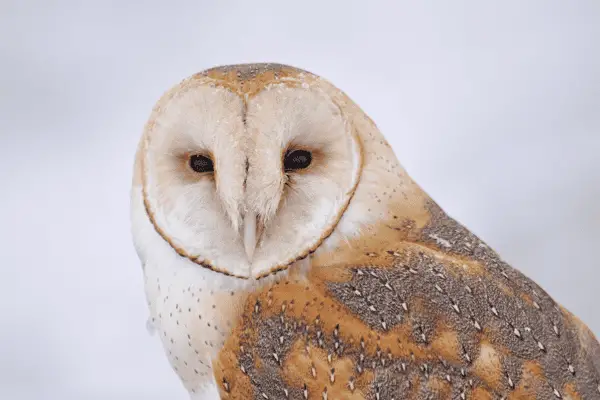
This bird is about a foot long and has a 3-foot wingspan. It’s a stealthy hunter, eating more rodents than any other animal. Found on every continent except Antarctica, Barn Owls mate for life and guard their territory.
Despite being widespread, Barn Owls face many challenges. Many young owls don’t make it to adulthood because of a lack of food. Starvation is a big threat to them and their babies. But, they prepare for hard times by storing food in their homes.
In Texas, you can find Barn Owls in old buildings like barns and sheds. They hunt for rats and small rodents at night. Their unique face and calls make them fascinating to bird lovers and nature fans.
“Barn owls are the most widespread landbird species globally, occurring on every continent except Antarctica.”
Barn Owls are rare in Texas but protected. They show the diversity of owls in the state, from the big Great Horned Owl to the small Elf Owl. Understanding these birds helps us value the balance in Texas’s ecosystem.
Where to Find Barn Owls in Texas
You can find Barn Owls in different parts of Texas, including:
- Katy Prairie Conservancy in northwest Houston
- Granger Lake area north of Austin
- Rio Grande Valley
- Lubbock area
- Greater Corpus Christi region
If you’re patient and keep an eye out, you might see these rare birds. Birdwatchers and nature lovers can add the Barn Owl to their Texas sightings.
7. Burrowing Owl
- Scientific name – Athene cunicularia
- Lifespan – 6 years (average)
- Size – 7.5 to 9.8 in
- Weight – 4.9 to 8.5 oz
- Wingspan – 20.1 to 24 in
- Status – Least concern
The burrowing owl lives underground, often in old burrows or its own. You can find these birds in open places like grasslands and prairies. They are common in the western and southern parts of Texas. Unlike many owls, they are active during the day, making them easier to see.

Where to Find Burrowing Owls in Texas
To see a burrowing owl in Texas, check out El Paso, Midland, Lubbock, Amarillo, Marathon, San Antonio, and McAllen. These areas have the right kind of open, grassy land for these birds.
These owls used to be more common in Texas, but their numbers have dropped a lot lately. This is because of lost habitats and other dangers. But, if you look carefully and wait, you might see these interesting birds in their natural setting.
“Burrowing owls are the only owl species that nests underground.”
The burrowing owl is special because it digs its own burrows or uses old ones. These can be old prairie dog holes or other small animal burrows.
Living underground has its ups and downs for these owls. They need to be good at using their burrows and watching for dangers. Their great eyesight and senses help them live in this special place.
When you’re looking for where to find burrowing owls in Texas, watch for these birds and their unique homes. With some luck and patience, you might see this amazing bird up close.
Check Our Previous Articles:
8. Elf Owl
- Scientific name – Micrathene whitneyi
- Lifespan – 5 years (maximum recorded)
- Size – 4.7 to 5.5 in
- Weight – 1.2 to 1.9 oz
- Wingspan – 10.6 to 13 in
- Status – Least concern
If you love birdwatching and want something unique, check out the Elf Owl (Micrathene whitneyi). They are the smallest owls in the world, weighing just an ounce and being only five inches long. Despite their small size, they are powerful hunters in the desert, eating insects, scorpions, and spiders in west and south Texas.

To see these rare owls, head to areas with lots of saguaro cacti in the southwestern U.S., Central Mexico, and Baja California. In Texas, try Bentsen Rio Grande State Park, Kickapoo Caverns State Park, Fort Pena Colorado Park in Marathon, Davis Mountains State Park, and Big Bend National Park. Look for them in old woodpecker holes in sycamore, oak, and cottonwood trees.
The Elf Owl population in Texas and California has dropped, but they still amaze birdwatchers at night. They live in Texas during spring and summer, then fly south for winter. If you want to see the smallest owl, plan a trip to Texas and watch the desert closely. The Elf Owl is waiting for you.
Frequently Asked Questions:
Q1. What owls are most common in Texas?
The most common owls in Texas include the Great Horned Owl, Eastern Screech-Owl, and Barred Owl.
Q2. What is the little owl in Texas?
The little owl often seen in Texas is the Eastern screech owl.
Q3. Do barn owls live in Texas?
Yes, barn owls live in Texas.
Q4. Are there owls in Dallas, Texas?
Yes, there are several species of owls in Dallas, Texas, including the Great Horned Owl and Eastern Screech-Owl.

